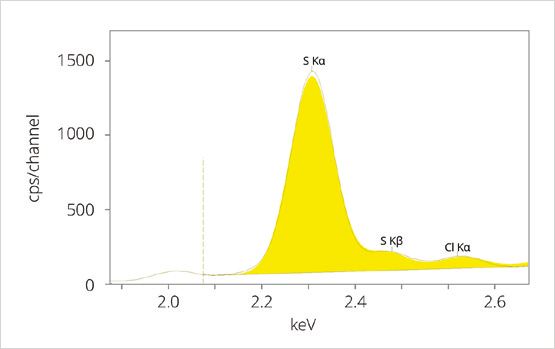Abstract
Waste oil with high chlorine concentrations is hazardous and must be treated differently than other waste oils. A common problem with the analysis of chlorine by EDXRF is the line overlap with sulfur due to the often-high concentrations of sulfur in waste oils.
Introduction
This data sheet demonstrates that the Epsilon 4 – a benchtop energy dispersive X-ray fluorescence (EDXRF) spectrometer – is capable of analyzing sulfur and chlorine in waste oil, without the need of helium.

Application background
Waste oil with high chlorine concentrations (several countries: > 0.1 wt %) is considered to be hazardous and must be treated differently than other waste oils. A common problem with the analysis of chlorine by energy dispersive XRF is the line overlap with sulfur due to the often high concentrations of sulfur in waste oils. The Epsilon 4 is equipped with a high resolution SDD detector, which improves the separation of S Kα, S Kβ and Cl Kα peaks. This improved separation leads to better quantification of S and Cl down to very low concentration levels, Figure 1. Moreover, use of a Ag-anode X-ray tube overcomes the common problem of tube lines overlapping the S Kα peak. In this way, improved accuracy and lowered limits of detection are achieved, compared to commonly used Rh- or Pd-anode X-ray tubes.





